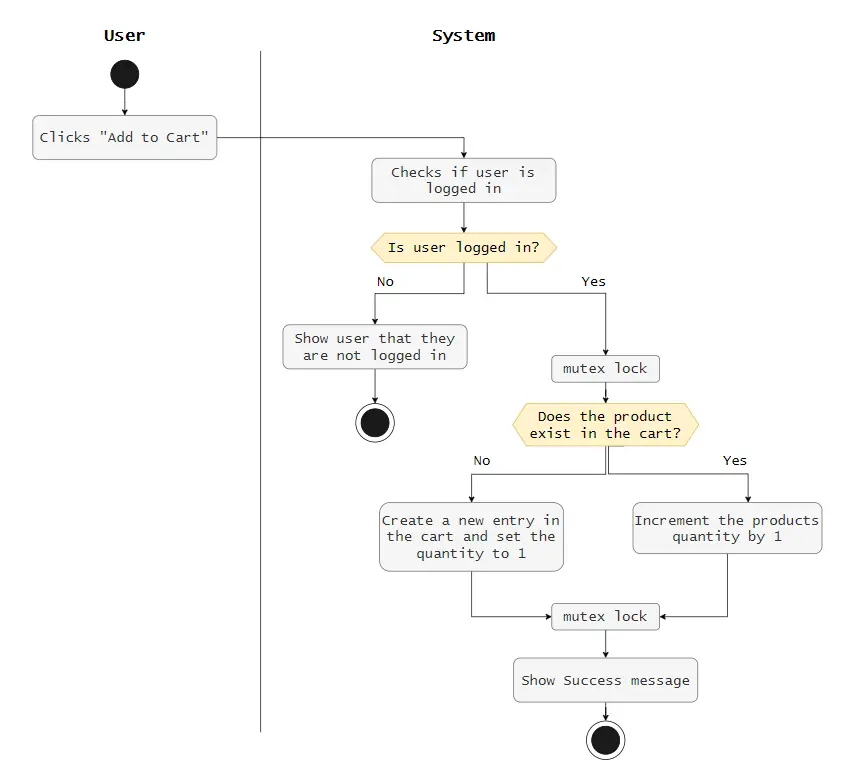Formal Methods vs. Plain Text Descriptions in Software Engineering
Introduction
In software engineering, how we define system behavior can make the difference between a reliable application and one riddled with bugs. Two common approaches are:
- Plain text descriptions (natural language, user stories).
- Formal methods (mathematical modeling, logic-based specifications).
This post compares them and shows which one results in LLMs generating a better code when we input these descriptions.
Plain Text Descriptions: The Agile Standard
Plain text descriptions use natural language to define requirements. Examples:
- User stories (“As a user, I want to log in to a service”).
- Acceptance criteria (“The authorizations service must be able to handle 10,000 concurrent requests”).
Text Description Example
User click on “add to cart” for a product. If user is logged in:
- If there isn’t any of the product type that the user has chosen, a new entry is added to the cart.
- If the product type is already in the cart, the quantity gets incremented by one.
If user is not logged in:
- Show the user that they are not logged in, and they have to be logged in to continue.
1 2 3 4 5 6 7 8 9 10 11 12 13 14 15 16 17 18 19 20 21 22 23 24 25 26 27 28 29 30 31 32 33 34 35 36 37 38 39 40 41 42 43 44 45 46 47 48 49 50 51 52 53 54 55 56 57 58 59 60 61 62 63 64 65 66 67 68 69 70 71 72 73 74 75 76 77 78 79 80 81package main import ( "errors" "fmt" ) type User struct { ID string Username string LoggedIn bool } type Product struct { ID string Name string Price float64 } type CartItem struct { Product Product Quantity int } type Cart struct { userID string items map[string]CartItem } type CartManager struct { carts map[string]*Cart } func NewCartManager() *CartManager { return &CartManager{ carts: make(map[string]*Cart), } } func (cm *CartManager) GetCart(userID string) *Cart { if cart, exists := cm.carts[userID]; exists { return cart } cart := &Cart{ userID: userID, items: make(map[string]CartItem), } cm.carts[userID] = cart return cart } func (c *Cart) AddToCart(product Product) error { if item, exists := c.items[product.ID]; exists { item.Quantity++ c.items[product.ID] = item } else { c.items[product.ID] = CartItem{ Product: product, Quantity: 1, } } return nil } func (c *Cart) GetItems() []CartItem { items := make([]CartItem, 0, len(c.items)) for _, item := range c.items { items = append(items, item) } return items } func handleAddToCart(user *User, product Product, cartManager *CartManager) error { if !user.LoggedIn { return errors.New("please log in to add items to your cart") } cart := cartManager.GetCart(user.ID) return cart.AddToCart(product) }
Formal Methods: Precision Through Math
Formal methods use mathematical logic to specify and verify systems.
Formal Method Example
Activity diagram (though UML is not exactly formal) for the textual description mentioned above:

1 2 3 4 5 6 7 8 9 10 11 12 13 14 15 16 17 18 19 20 21 22 23 24 25 26 27 28 + 30 31 32 33 + 35 36 37 38 39 40 41 42 43 + + 46 47 48 49 50 51 52 53 54 55 56 57 58 59 + + 62 63 64 65 66 67 68 69 70 71 72 73 74 75 + + 78 79 80 81 82 83 84 85 86 87 88 89 90 91 92 93package main import ( "errors" "fmt" "sync" ) type User struct { ID string Username string LoggedIn bool } type Product struct { ID string Name string Price float64 } type CartItem struct { Product Product Quantity int } type Cart struct { userID string items map[string]CartItem mu sync.Mutex } type CartManager struct { carts map[string]*Cart mu sync.Mutex } func NewCartManager() *CartManager { return &CartManager{ carts: make(map[string]*Cart), } } func (cm *CartManager) GetCart(userID string) *Cart { cm.mu.Lock() defer cm.mu.Unlock() if cart, exists := cm.carts[userID]; exists { return cart } cart := &Cart{ userID: userID, items: make(map[string]CartItem), } cm.carts[userID] = cart return cart } func (c *Cart) AddToCart(product Product) error { c.mu.Lock() defer c.mu.Unlock() if item, exists := c.items[product.ID]; exists { item.Quantity++ c.items[product.ID] = item } else { c.items[product.ID] = CartItem{ Product: product, Quantity: 1, } } return nil } func (c *Cart) GetItems() []CartItem { c.mu.Lock() defer c.mu.Unlock() items := make([]CartItem, 0, len(c.items)) for _, item := range c.items { items = append(items, item) } return items } func handleAddToCart(user *User, product Product, cartManager *CartManager) error { if !user.LoggedIn { return errors.New("please log in to add items to your cart") } cart := cartManager.GetCart(user.ID) return cart.AddToCart(product) }
Key Differences at a Glance
| Aspect | Plain Text | Formal Methods |
|---|---|---|
| Precision | Low (words vary) | High (logic) |
| Verification | Manual testing | Automated proofs |
| Best For | Early requirements and prototyping | Safety-critical code |
| Speed | Fast | Slow but rigorous |
| LOC | 81 | 93 |
| Functions | 5 | 5 |